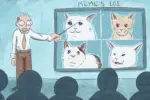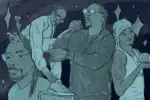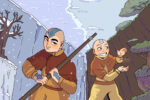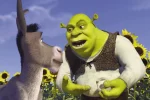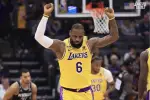“Are you ready kids?” This musical question can only mean one thing: It’s time for another adventure in the underwater town of Bikini Bottom, home to our favorite undersea sponge. Along with beloved characters like Patrick, Squidward and Sandy, every day children around the world tune in to Nickelodeon to see what nautical nonsense SpongeBob has in store.
“SpongeBob SquarePants” premiered in 1999 and swiftly became a pop culture phenomenon with no sign of stopping. Due to the show’s popularity, particularly among Gen Z and millennials, the show seamlessly lends itself to meme culture.
Meme culture has evolved in many ways since the rise of social media platforms. It started with simple, original memes such as the Troll face, the Success Kid and Bad Luck Brian. These memes became well-known for their simple-to-use and understand templates. The memorable Rickrolling meme also went viral for the pleasure it brought from pranking others. With the passing of time, however, new memes emerged and replaced older ones.
Some popular memes that have appeared in the past year include Baby Yoda, Bernie Sanders and — most recently — jokes about Among Us reflecting the sudden popularity of the mobile game. Like all viral content, however, memes come and go and are always evolving.
Curiously, “SpongeBob SquarePants” seems to break the trend of only being popular for a certain amount of time, as the show’s memes have been consistently accepted for years. So many different meme templates have emerged from just this one show, such as the “ight imma head out,” “imagination” and the surprised Patrick meme.
While these memes are all great, they beg the question: What is it about this cartoon that resonates so well with meme culture, and why has it endured so long? To answer that, we have to go back to the show’s origin.
View this post on Instagram
“SpongeBob SquarePants” was created by former marine biologist Stephen Hillenburg, who used his passion for aquatic life to shape the cartoon. He then pitched the show to Nickelodeon by bringing in a model aquarium with the characters inside and blasting tropical music during the meeting.
Fortunately, Nickelodeon took a chance on the show, and the rest is history. Millennials and Gen Zers all around the nation flipped to Nickelodeon to watch our favorite undersea characters in nonsensical adventures. Whether it started with the simple premise of delivering a pizza, stopping Plankton from stealing the Krabby Patty secret formula or even going door-to-door selling chocolate, fans loved it all.
Perhaps the most intriguing aspect of the series is in its premise and how the show isn’t afraid to be weird. And when I say weird, I mean weird.
Think about it — the show is about a literal sponge who lives underwater and works at a fast-food restaurant while also enduring a never-ending quest to get his driver’s license. It’s a ridiculous concept, and the series doesn’t try to be anything else, particularly in how it resolves plots. Rather than having an episode’s storyline come to a natural resolution, SpongeBob would instead escalate the plot and then come up with the most absurd ending possible.
One famous example is in the episode titled, “I Had an Accident,” in which SpongeBob refuses to go outside after a traumatic incident. This decision leads his friends Patrick and Sandy to come up with various schemes to get him to come outside again.
While most other cartoons would end with some heartwarming message about friendship, SpongeBob instead resolves this conflict by strangely having the gang encounter a real gorilla. The group then questions the animal’s presence underwater before watching it ride off into the sunset atop a horse. The episode concludes when the camera pans back to reveal a human family watching the show, who then turns the TV off in disbelief at what they just watched.
https://www.youtube.com/watch?v=zUZsjW-VOxY
All this and more is why the show resonates with its target audience of children, but also its adult audience of former viewers. Even now as adults, many people still find themselves rewatching and catching subtle jokes that flew over their heads as kids.
This and more has led to the outpouring of effort put into SpongeBob memes as we celebrate an important show of our childhood. A display of this dedication can be found in the popular subreddit r/BikiniBottomTwitter, a Reddit forum dedicated to all things SpongeBob.
The support grew so strong that when creator Stephen Hillenburg tragically passed away in 2018, fans campaigned to have one of the show’s most famous moments — the performance of “Sweet Victory” — to be played at the Super Bowl in Hillenburg’s memory.
Many were doubtful that the campaign would even work. After all, why would a multibillion-dollar organization care about a kids cartoon? Yet somehow, the Goofy Goobers pulled it off, and our favorite sponge made an appearance at Super Bowl LIII. Would this push even have worked had it not been for the ever-loving support that fans put into the show’s memes?
Unlike Among Us posts or other current memes, SpongeBob was a shared experience for most kids around the country. Not everyone has watched “The Mandalorian,” and not everyone follows U.S. politics, but you can be sure that everyone watched SpongeBob growing up. That shared experience, the absurd humor and the endless meme potential is what makes SpongeBob the king of memes, for now and years to come. As long as SpongeBob memes are around, every day will continue to be the best day ever.





